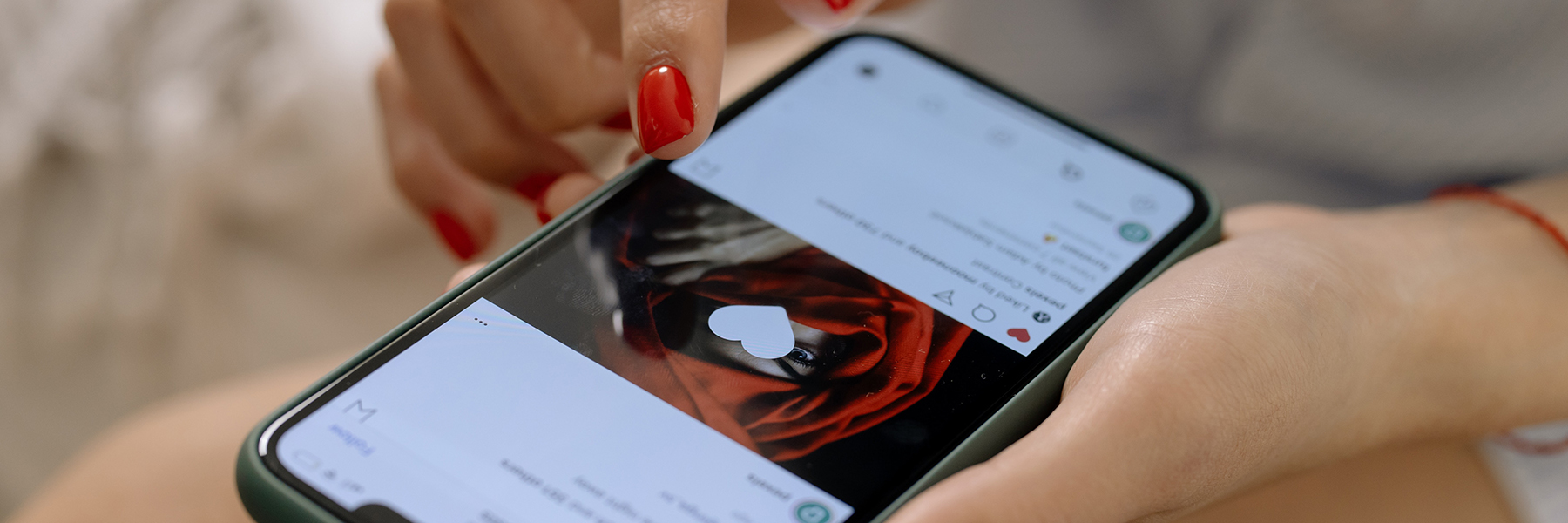Do self-disclaimer captions on Instagram photos featuring “thin-ideal” images work to mitigate negative shifts in body image and mood among young women? Faculty of Health Associate Professor Jennifer Mills and graduate students Sarah McComb and Keisha Gobin decided to find out.
By Elaine Smith

Jennifer Mills began her research career 20 years ago studying the impact idealized body images had on young women; today, the work continues, but the medium has changed.
“Back then, I was looking at women’s reactions to the idealized body images they saw in fashion magazines,” says Mills, an associate professor in the Department of Psychology at York University. “Many women had an intense drive to compare themselves to these images.”
Then came social media and camera phones and the proliferation of selfies. When Instagram came onto the scene, body checking against idealized images accelerated.
“These images of women now appeared, not only in fashion magazines, but online and on phones, all day, every day,” says Mills, who also serves as director of clinical training for the clinical psychology program. “I began to look at the causal effects of social media on body image and mental health. The same theories about social comparisons and body checking are relevant.”
Online photos and disclaimers
Mills’ most recent study, done in conjunction with graduate students Sarah McComb and Keisha Gobin and published online in Body Image, explores whether self-disclaimer captions on thin-ideal Instagram photos, written with the intention of being transparent and considerate of the Instagram viewer’s well-being, would mitigate negative shifts in body image and mood among young women. The study investigated personalized and positive self-disclaimers in a study that involved 311 undergraduate students at York between the ages of 18 and 25.
The young women were randomly assigned to one of four groups in the study and they all began by having their current mood and feelings about their body image measured. Next, each group was shown 12 Instagram photos of an attractive, thin-ideal woman. One group saw only the photos; the other three groups each saw one type of disclaimer: containing a generic message that the photo had been altered; a specific message about the alterations made to the photo; or a kind warning about the harm done by social comparisons. They were asked to look at and rate each of the photos – on a scale of one to five – according to a number of dimensions, such as how visually appealing it was.
Afterward, the participants were again assessed for current mood and feelings about their own body image, as well as for their own use of photo editing/manipulation.
Thin ideal isn’t truly ideal
There were three main conclusions drawn from the study, all contributing to the body of knowledge about body image and self-comparison. The results demonstrated that exposure to thin-ideal images showing extremely thin young women on Instagram was associated with decreased body satisfaction, happiness and confidence, and a reduced likelihood of comparing one’s body to another’s. This is consistent with past research from Mills’ lab and others.
Second, contrary to predictions, disclaimers were not harmful to mood or body image, but were also not protective to the average participant.
Finally, the specific self-disclaimer had a protective effect for those who frequently alter their own photos, compared to the image only, generic, and warning self-disclaimer conditions.
“Generally, exposure to images of peers is more damaging than celebrities or models because they are more realistic comparison targets,” Mills says. “Comparing yourself to a supermodel isn’t as upsetting because you can’t necessarily live up to that standard.”
Clicking into the danger zone
And while it’s difficult to trace causality or long-term effects of regular exposure and comparisons, Mills says, “All the evidence points to social media being a contributing factor to eating disorders and body preoccupation.”
Since Mills treats eating disorder sufferers in a clinical setting, all of these insights add to her understanding of treatment options. Her research lab, the EASE Lab (Eating, Affect and Self-Evaluation), focuses on eating and body image, issues that are “universally relatable” to women.
“It’s an exciting time,” she says. “Our research is really taking off, which is wonderful, because people often minimize the seriousness of eating disorders, even though they are life-threatening diseases.”


